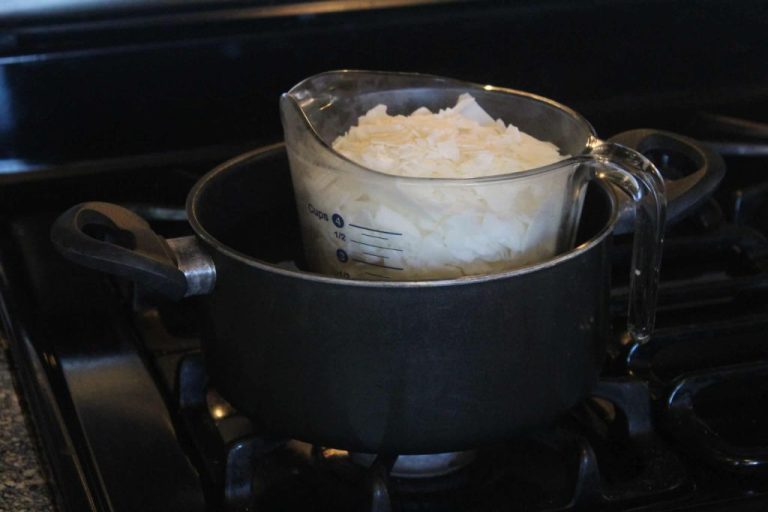Is Liquid Paraffin Good Or Bad For You?
What is Liquid Paraffin?
Liquid paraffin, also known as mineral oil, is a highly refined petroleum product composed of a mixture of hydrocarbons (Collins Dictionary, 2022). It is a clear, colorless, odorless, and tasteless oil that is liquid at room temperature.
Liquid paraffin has a variety of uses and applications. In medicine, it is used as a laxative to treat constipation, as a lubricant for enemas, and as a moisturizer for dry skin conditions. It is also used in cosmetics and skin care products as an emollient. In industry, liquid paraffin is used as a coolant and insulating fluid in transformers and other electrical equipment. It is also used as a lubricant and cutting oil. In food processing, pharmaceuticals, and laboratory work, liquid paraffin is used because it is chemically inert and won’t spoil products or react with other chemicals.
Benefits of Liquid Paraffin

Liquid paraffin has some benefits when used topically or internally in small doses. Two of the main benefits are its laxative properties and its moisturizing properties.
As a laxative, liquid paraffin works by softening stools and helping them move through the intestines more easily. This helps relieve constipation. It is considered a very gentle laxative that doesn’t irritate the digestive tract (source).
Liquid paraffin is also known for its moisturizing properties when applied to the skin. It is non-comedogenic, meaning it won’t clog pores. It helps moisturize dry skin by forming a protective barrier that prevents water loss from the epidermis. This can provide relief for conditions like eczema and dry, itchy skin (source).
Potential Health Risks
Liquid paraffin does have some potential health risks to be aware of:
Aspiration risk: Liquid paraffin is an oil-based laxative. There is a risk of aspiration if liquid paraffin is accidentally inhaled into the lungs, especially in elderly people or those with swallowing difficulties. This can cause serious complications like chemical pneumonia (1).
Allergic reactions: Some people may experience allergic reactions to liquid paraffin. Reactions can include skin rashes, itching, and facial swelling. People with sensitivities to mineral oil products should use caution (2).
Nutrient absorption issues: Long-term and excessive use of liquid paraffin can potentially interfere with the absorption of fat-soluble vitamins A, D, E and K. It may also reduce absorption of some dietary fats. This disruption is generally mild, but can become a concern with prolonged overuse (1, 3).
Overall, liquid paraffin is considered safe when used occasionally and as directed. But certain populations like the elderly and people with swallowing problems may want to exercise caution or avoid use.
Recommended Uses
Liquid paraffin has a few recommended uses, primarily as a laxative and moisturizer:
As a laxative: Liquid paraffin can be used to treat constipation, especially in children. It works as a stool softener and helps ease the passage of stools. The recommended dosage is 15-30 mL for children and 15-45 mL for adults. It should be taken once daily, preferably at bedtime.[1]
As a moisturizer: Liquid paraffin can be used topically as a moisturizer, especially for very dry skin conditions like eczema. It helps retain moisture in the outer layer of skin and provides a protective barrier. A small amount can be applied to affected areas 1-2 times per day.
For constipation relief: The lubricating and stool-softening properties of liquid paraffin make it effective for relieving constipation. It can be used for short-term relief of occasional constipation. The starting dose is 15-30 mL daily for children and 15-45 mL for adults. The dose can be adjusted based on response.[2]
[1] https://en.wikipedia.org/wiki/Liquid_paraffin_(drug)
[2] https://www.sciencedirect.com/topics/medicine-and-dentistry/liquid-paraffin
Contraindicated Uses
Liquid paraffin should not be used orally in certain situations where it may cause harm. Some key contraindications for oral liquid paraffin consumption include:
Infants and toddlers: Liquid paraffin should not be given to children under the age of 6 years. There is a risk of aspiration which can lead to lipoid pneumonia in young children (https://pubmed.ncbi.nlm.nih.gov/8136086/).
Pregnancy and breastfeeding: The use of liquid paraffin is generally not recommended during pregnancy and breastfeeding. While there is limited research, liquid paraffin may be absorbed by infants through breastmilk which can cause diarrhea or bleeding in the infant (https://www.medscape.co.uk/drug/liquid-paraffin-oral-70953-70953).
Bowel obstruction or perforation: Liquid paraffin use is contraindicated if there is a known or suspected bowel obstruction. In such cases, liquid paraffin may exacerbate the obstruction or increase risk of bowel perforation (https://www.sciencedirect.com/topics/pharmacology-toxicology-and-pharmaceutical-science/liquid-paraffin).
Aspiration risk: People with swallowing difficulties or other conditions that increase aspiration risk should avoid using liquid paraffin orally due to the risk of lipoid pneumonia (https://pubmed.ncbi.nlm.nih.gov/8136086/).
Alternatives to Liquid Paraffin
There are some natural and safe alternatives to using liquid paraffin.
For constipation relief, stool softeners made from natural ingredients can be effective. Some options include psyllium husk, flaxseeds, aloe vera juice, or magnesium supplements (Evans, 1941). These provide fiber and moisture to ease bowel movements without the risks of mineral oil.
For skin care, natural moisturizers like coconut oil, shea butter, aloe vera gel, and jojoba oil can hydrate the skin without clogging pores. These plant-based oils contain fatty acids that mimic the skin’s natural oils (Bennett, 1941). Always patch test new products before wider use.
When alternatives are needed for medical procedures requiring lubrication, water-based or silicone-based lubricants are available. These are safe and non-irritating options.
Overall, many natural ingredients can provide safer alternatives to liquid paraffin for laxative, skincare, and lubrication uses.
Dosage and Administration
When used as a laxative, the recommended dose of liquid paraffin for adults is 10-30 mL daily, taken orally. For children over 3 years old, the typical dose is 5-15 mL daily. It’s best to start with a low dose and increase gradually if needed (1). Liquid paraffin should be taken on an empty stomach, either 1 hour before meals or at bedtime. The full daily dose can be taken all at once or divided into smaller doses throughout the day (2).
For use as a moisturizer, liquid paraffin can be applied directly to the skin 1-2 times per day. Apply a thin layer to clean, dry skin and massage gently until absorbed. It can be used on the face, hands, feet, and body. Liquid paraffin is often formulated into creams, ointments, and lotions in varying concentrations for topical use (3).
Side Effects
Liquid paraffin can cause some side effects, though they are usually mild [1]. The most common side effects include:
- Diarrhea: Liquid paraffin can lead to loose, watery stools. This occurs because it is not absorbed in the intestines and draws water into the colon, resulting in increased motility and frequency of bowel movements [2].
- Skin irritation: Topical application of liquid paraffin can cause redness, dryness, and irritation of the skin in some people [3].
- Allergic reactions: In rare cases, liquid paraffin may trigger allergic reactions in sensitive individuals. Symptoms can include rash, itching, swelling, and difficulty breathing.
These side effects are usually mild and subside quickly after stopping use of liquid paraffin. Seek medical advice if side effects persist or worsen.
Warnings and Precautions
There are some important warnings and precautions to consider before using liquid paraffin:
Aspiration risk: There is a risk of aspiration and lipoid pneumonia when taking liquid paraffin, especially in elderly people with dysphagia or recurrent vomiting. Liquid paraffin is very light and oily, so it can easily enter the lungs if vomited or inhaled. This can cause lipoid pneumonia, which is difficult to treat. Those at high risk should use alternative laxatives [1].
Allergic reactions: Some people may experience allergic reactions to liquid paraffin. Signs include skin rash, itching, swelling, and breathing difficulties. People with known allergies to mineral oils should avoid using liquid paraffin [2].
Oily leakage: Liquid paraffin can leak from the rectum and soil clothing. This is embarrassing and inconvenient for many users.
Interactions: Liquid paraffin can interact with several medications and reduce their absorption and effectiveness. It is important to separate doses of liquid paraffin and other oral medications by at least 2 hours [3].
The Bottom Line
Overall, liquid paraffin can provide some benefits when used appropriately, but also has some potential risks. It can help treat constipation and soothe irritated skin, but should not be used long-term or internally due to potential side effects. Liquid paraffin is considered safe for occasional, external use in healthy adults and older children, but caution is recommended for babies, pregnant women, and people with certain health conditions.
The main appropriate uses of liquid paraffin supported by evidence are:
- Short-term treatment for mild constipation in adults
- Moisturizing dry or irritated skin
- Reducing friction between skin folds to prevent chafing and blistering
However, long-term or frequent use, especially internally, is not recommended due to risks like lipid pneumonia, potential interference with absorption of fat-soluble vitamins, and possible laxative dependence. Topical use is likely safer than oral ingestion. Overall, liquid paraffin may provide some benefits for occasional use, but alternatives may be preferred for long-term treatment.





